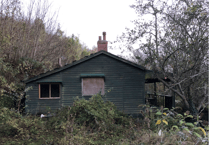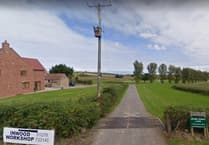STUDENTS of West Somerset College, Minehead, will not be able to escape the weather while working on the school’s community farm after a planning inspector ordered a shelter to be knocked down.
The college had built a 30 ft by 20 ft open sided timber shelter to help protect students and animals at the farm site in a field next to the old A39 road on the edge of Dunster.
But it was refused planning permission by the former Somerset West and Taunton Council (SWT), which said the size and height of the shelter harmed the character and appearance of the landscape in close relation to Exmoor National Park.
In an appeal against the refusal the college’s academy trust head of premises and estates Andrew Smith said although the roof was visible, the shelter was obscured by a hedge and the timber structure was set against a wooded area.
Mr Smith said: “We were keen to install a sympathetic shelter, which would not be out of character.
“Timber as a sustainable material was selected.
“It was also our error that we did not apply for planning permission prior to the installation, as we believed this was not required.
“The shelter is located at the lowest possible part of the site and close proximity to the old A39 hedge.
“It is constructed in natural materials which over time will darken and blend into the surrounding vegetation.
“The timber cladded roof will also allow moss and other vegetation to grow, which should enhance its blending into the surroundings.
“On the old A39 there are a number of caravans permanently located adjacent to our land.
“This to me is a greater blot on the landscape, and yet these have been sited here for many years.”
Planning inspector James Evans said: “Although the appeal site is outside of the Exmoor National Park, the hills to the south are within it.
“The shelter is an open-sided timber structure with timber shingled roof and an earth floor.
“At the time of my inspection there was a table and a few large logs underneath, with a fire pit and more logs nearby.”
Mr Evans said the shelter was visible from the surrounding area and the roof could be seen from long distances and while the timber would weather in time, it would remain a conspicuous building in an open setting.
He said: “Taken as a whole, the size of the shelter, its form, and its position, are such that it is a building that draws the eye.
“While acknowledging the high-quality form and materials, in this case the shelter is an intrusive and curiously discordant structure within a managed agricultural landscape that would harmfully detract from the open lowland setting of the national park.”
Mr Evans said for those reasons he dismissed the college’s appeal.




